The "Golden Era" of Guitar Player Magazine
Behind the Scenes at a Groundbreaking Music Magazine
In April 1978 I sent my resume to Guitar Player magazine. At the time, I was living in a run-down neighborhood in Detroit and had been an editor at Gale Research Company for about a year. Every day, new magazines arrived at Gale, and during breaks I read every issue of Rolling Stone, Billboard, Cashbox, and my two favorites, Guitar Player and Living Blues. The front section of Guitar Player featured a column, Pro’s Reply, bylined by one of the magazine’s editors, Dan Forte. The column featured Dan’s photo in the heading, and every month he interviewed a famous or historically significant player. From 2,300 miles away, I thought he had the best gig in the world.
I desperately wanted out of Detroit. A deadly street gang, the Errol Flynns, were on the rise. From my front porch I could point up and down my street to where several murders had recently occurred. So I dutifully mailed my resume off to all of the magazines I’d been reading, along with copies of articles I’d written for Gale’s Contemporary Authors series on Jim Morrison, e.e. cummings, Mao Zedong, Christopher Lee, and others. With its small editorial staff of just Don Menn and three assistant editors, Guitar Player seemed like the longest shot of all.
A few days later, much to my surprise, I received a telephone call at work from GP’s office coordinator, Clara Erickson, asking if I’d be available to speak with Don Menn at 5:30 that afternoon. Dan Forte, she told me, had just parted ways with the magazine. “The drive home from downtown Detroit is really stressful,” I told Clara, “and I like to unwind by watching My Three Sons when I get home. Could he call a half-hour later?”
When he came back from lunch, Don asked Clara, “Did you get ahold of that Obrecht guy?” Clara responded, “You’re not gonna believe this, Don. He asked if you could call a half-hour later so he could watch My Three Sons.” Don, bless his heart, reportedly quipped, “Oh, my God. He has a sense of humor – let’s hire him!” They arranged for me to fly out for a meeting at their offices in Cupertino, California, a few days later.
A week earlier, I’d foolishly followed my father’s advice and wore a new three-piece suit to an interview at Creem magazine, where the women editors squinted at me like I was some kind of narc. For the Guitar Player interview, I went casual. Good thing, because Don Menn showed up barefoot and tousled, in jean cutoffs and a King Tut T-shirt. I liked him instantly. Hanging behind his head in his Cupertino office was a numbered Les Paul guitar that had been smashed onstage by Pete Townshend. Within a couple of hours, I’d also met Jim Crockett, Tom Wheeler, and Tom “Ferd” Mulhern, and I’d been hired as Guitar Player’s new Assistant Editor. I was sent home with copy to edit, a Pro’s Reply column to write, and instructions to pack up and move to California within the week. And so on Ascension Thursday, I flew back to sunny San Jose to begin my new life. As soon as I set foot in my new office, Don told me I had an hour to write an album review, to fill a space in the new issue that was about to ship out. I put a new Mance Lipscomb release on the turntable, slipped on headphones, and got to work.
My timing was unassailable. Guitar-intensive music was a huge attraction during the summer of 1978, and there were no other guitar magazines being published in the United States. I’d been preparing for this gig, it seemed, since childhood. I’d spent most my boyhood earnings from an early morning Detroit Free Press paper route on LPs by Joan Baez, Bob Dylan, the Beatles, and an array of psychedelic bands. Hearing Jorma Kaukonen’s “Embryonic Journey” on the Jefferson Airplane’s Surrealistic Pillow was a watershed event, to the point where the only word on my 1967 Christmas wish-list was “guitar.” An acoustic Silvertone arch-top showed up under our tree. My older brother Tom’s friend Terry Wolf taught me how to fingerpick, and thus began my lifelong love for playing guitar.
I’d also been an avid reader ever since Santa left me a copy of Anne Terry White’s All About Archaeology in 1959. By second grade, I already knew I wanted to be a writer. The English instructors at my Jesuit all-boys high school and at John Carroll University provided considerable help along the way, to the point where my graduate studies in creative writing at Ohio University seemed anticlimactic. Meanwhile, my experiences hitchhiking around the country helped me develop interviewing skills.
From the very beginning, the work we were doing at Guitar Player seemed important – not just for the company, but for fans of guitar music all over the world. My assignments during my first months at Guitar Player reveal the ecumenical nature of the magazine’s coverage. By year’s end, I had edited other writers’ cover stories on Ritchie Blackmore, Roy Clark, and Bill Wyman, as well as freelance articles on the band Kansas; jazz guitarists Remo Palmier, Ed Bickert, and Al Caiola; and luthiers Jimmy D’Aquisto and Matt Umanov. I’d edited columns by Tommy Tedesco, Jeff Baxter, Craig Anderton, Barney Kessel, Michael Lorimer, and Jimmy Stewart, and prepared the annual Readers Poll ballot. Under my own byline, I wrote feature articles on bluesmen Fenton Robinson and Clarence “Gatemouth” Brown, feminist indie Meg Christian, young Eddie Van Halen, Stefan Grossman, John Renbourn, and Steve Morse’s new band, the Dixie Dregs. My Pro’s Reply columns had featured rockabilly pioneer Paul Burlison of the Rock ’N’ Roll Trio, Woodstock star Country Joe McDonald, Hall & Oates, Emmylou Harris, and Shawn Phillips. Of these 1978 assignments, the Eddie Van Halen interview – his first published in a national magazine – would prove the most newsworthy.
After that, the interviews and articles came fast and furious: cover stories on Bad Company, Jeff Beck, Jeff Baxter, Billy Gibbons, Steve Morse, Duane Allman, Charlie Christian, Andy Summers, Randy Rhoads, Brian May, and the list goes on. At the same time, my monthly Pro’s Reply column brought the opportunity to interview anyone I wanted – from my childhood hero Ricky Nelson to psychedelic guitar pioneer James Gurley to Charo, George Gobel, and the guys in Devo. What a blast!
From the beginning I made it my mission to not only introduce readers to up-and-coming players such as Van Halen, James Honeyman-Scott, Joe Satriani, Steve Vai, and Yngwie Malmsteen, but also the living pioneers from the 78s era. Interviewing Nick Lucas, the first “guitar star” in American history, was a big thrill, as was talking to electric guitar pioneers Doc Kauffman, Roy Smeck, Eddie Durham, and Floyd Smith. At Guitar Player, we were committed to covering players of all styles and from all walks of life – as long as the music was solid. My lifelong love of blues led to long talks with John Lee Hooker, B.B. King, Buddy Guy, Otis Rush, Johnny Shines, Johnny Winter, Sam Chatmon, Albert Collins, Luther Allison, and many others.
In those days, Guitar Player was highly respected by musicians and industry figures alike. Famous players asked us to interview them. Told of my upcoming cover story on Charlie Christian, Benny Goodman, Columbia producer John Hammond, and jazz guitar great Barney Kessel were happy to contribute their memories of the man they personally knew. When I did the Duane Allman cover story, Gregg Allman, Dickie Betts, and Duane’s studio pals from Muscle Shoals all volunteered for interviews, as did Billy Gibbons and Duane’s closest friend, the bluesman John Hammond (son of the Columbia producer).
While Rolling Stone, Cream, Circus, and other rock-oriented magazines tended to veer into the gossipy parts of celebrities’ lives, at Guitar Player we focused almost exclusively on the music – how famous songs were written, how unforgettable solos were recorded, how the player’s gear influenced tone and note choice, how ruts can be overcome and inspiration enhanced, and so on. Before every interview, I’d consciously put myself in the place of the interviewee’s most dedicated fans. I tried to ask the questions they’d ask. I’d listen carefully to every song on every record, pore over press clippings, and try to explore new ground in each conversation. With often-interviewed musicians such as Andy Summers, Keith Richards, Brian May, and especially the old-timers who’d recorded before World War II, this proved very effective. It also helped that we were allowed a lot of editorial space in the magazine, so the interviews and feature articles could go much further in-depth than the vast majority of today’s print music journalism.
For me, the very best of the twenty years I spent on staff at Guitar Player were in the late 1970s and early 1980s, while we were still in the Cupertino office on Lazaneo Drive. From our front door, we could look out on rows of apricot trees and a farmhouse with a Shetland pony tied to a nearby tree (these same fields are now the site of Apple’s world headquarters). During our years on Lazaneo Drive and Stevens Creek Boulevard, GPI was still owned by Bud and Maxine Eastman – fine people, but we seldom saw them. Our publisher, Jim Crockett, directed the company’s day-to-day operations, and at Guitar Player we had a small, intensely creative crew. These were happy, productive times – the magazine’s “Golden Era,” as I’ve heard it described.
Don Menn planned the issues, giving each editor his monthly assignments on handwritten little squares of paper, which I still have and cherish. Tom Wheeler, Tom Mulhern, and I wrote and/or processed the copy on typewriters, while Bill Yaryan and later Carla Carlberg and Dominic Milano designed and laid-out the issues. (Eventually we were given Kaypros and then Mac SE’s.) John Lescroart, known as “Capo” around the office, was Ad Director when I arrived, and man, what a fine guy, satirical songwriter, and hard-to-beat poker player! Dennis Fullerton came in when Capo left to pursue his dream of becoming a bestselling novelist (a feat he achieved with his many crime thrillers featuring Dismas Hardy, Abe Glitsky, and Wyatt Hunt). An excellent guitarist who’d played in 1960s rock bands, Dennis got along well with everyone, a class act through and through. Our office managers Clara Erickson and, later, Judie Eremo provided invaluable support. Jon Sievert, our staff photographer and later an on-staff editor, opened a lot of doors for me into big-time rock and roll. Grand and good-hearted, Jon became like a brother to me. In fact, GPI often seemed like a big family.
I found our publisher, Jim Crockett, wonderful work with. He always treated me with dignity and respect. He knew how to get out of the way and allow creative people to flourish. His extraordinarily generosity was evidenced by our salaries and annual Christmas bonuses. When the Tokyo-based Rittor company began reprinting my articles in Japanese, Jim split every incoming reprint fee 50-50 with me, even though he was not required to. His “From the Editor” ran in the front of every issue, and I edited this column with pleasure for many years.
Sometimes after we sent an issue to press, we’d have a jam session in the warehouse or garage. B.B. King, Chick Corea, Jerry Garcia, Barney Kessel, Tommy Tedesco, Country Joe McDonald, David Bromberg, and Pete Seeger were among those who jammed alongside GPI employees. Tom Mulhern, whose razor-sharp wit, mind-boggling organizational abilities, and unwavering dedication were essential to GP’s morale and success, usually played bass at these jams while Jim Crockett manned the drums. When it came to playing guitar, Tom Wheeler could easily out-jam all of us – that held until Joe Gore came on staff.
I rapidly discovered that being an editor of a popular music magazine would bring endless opportunities for the excesses associated with big-time rock and roll, from unspeakably beautiful women bearing cocaine and other drugs to offers of all-expense-paid junkets and endless opportunities for swag. For me, though, it was always about the byline. The copy on the page came first, and our love for writing about guitar music kept our core staff sane and on-track while some of our officemates and industry associates fell prey to the excesses. Tom Wheeler handed me my first opportunity to freelance for Rolling Stone, while Jim encouraged me to branch into producing one-shot magazines and books. Tom and Jim allowed us to interview any artist or write about any scene we felt worthy of coverage. I had complete editorial freedom.
For decades, people have asked me who were my best and worst interviewees. One contender for the worst was George Thorogood, whose ego and attitude in the early 1980s seemed to me to extend beyond his abilities. Then again, he may have just been having a bad day. And then there was Albert King, a great blues artist. When I called him about doing an interview, Albert said, “I want $500.” I politely told him that we did not pay the artists we interviewed. Albert responded, “You sell your magazines for dollars, don’t you? Well, I want 500 of ’em.” Choosing the best is trickier. Two musicians were remarkable for their insight and ability to speak in perfect Queen’s English: Andy Summers and Keith Richards, who need no editing. Eric Johnson stands out for his warmth, insight, and friendship, and what an exquisite player! Ry Cooder was always great to talk to because of our shared passion for roots American music. I only spent one day with Rory Gallagher, a great favorite of mine, but I just loved talking to him. My favorite interviewee, though, is probably John Lee Hooker. (While I did three Guitar Player cover stories with John, our best interviews were done near the end of his life for Living Blues.)
The other question people frequently ask is what I liked best about my twenty years on staff at Guitar Player – the close encounters with famous musicians, the “rock and roll lifestyle,” the recognition, the swag, the freedom to choose what to write about, the ability to shape people’s thoughts about music…. Actually, none of the above. For me, as surprising as it may sound, it was sitting down one-on-one with Tom Wheeler to refine our writing. My friend Tom was, without doubt, the best copyeditor I’ve encountered. He was exceptionally lucid, a brilliant writer, really knew language and grammar and gear, and adored good music. Some days, especially early on, we’d have animated discussions on the placement of a single word – or a comma, a semi-colon, or an em-dash. Tom and I united in wanting the writing to sparkle with streamlined editing and an emphasis on active voice. Today, those meetings with Tom over manual typewriters and well-used jars of White-Out continue to inform my approach to teaching college-level journalism and creative writing.
Like Don Menn, Tom Wheeler was also profoundly ethical. Under his stewardship, Guitar Player editors were safeguarded from the demands of angry advertisers and other outside interests. Sadly, this was not always the case after his departure. While Editor-in-Chief, Tom encouraged us to pursue our interests, scout new talent, and write from the heart. During his tenure, other new editors came onboard: Jim Schwartz, with whom I’d attended grad school at Ohio University; jazz and classical guitarist Jim Ferguson; method book author David Alzophon; Jon Sievert; the returning Dan Forte; and Matt Resnicoff, whose insights occasionally bordered on pure genius. (It saddens me to report that Tom Wheeler passed away in 2018, followed by Jon Sievert in 2020.) While not as well known as the editors whose photos ran in every issue, three extraordinarily talented women rounded-out our little editorial family later in the 1980s: Art Director Peggy Shea, effervescent office coordinator Janine “J9” Cooper, and office manager Lonni Gause, later promoted to Managing Editor.
From my perspective, another high-water mark in Guitar Player history was set in the early-to-mid 1990s, when Joe Gore, James Rotondi, Andy Ellis, and Art Thompson were on staff. Joe is actually a much more accomplished guitarist than many of the people who’ve appeared on our covers. Clever, full of attitude, and musically informed in a way our writing had never been before, Joe’s words energized the magazine when it really needed it. James Rotondi is as cheery and charming a guy as I’ve encountered. To this day, hanging out with him is always a blast. He’s a soulful and witty writer too, and a brilliant guitarist and songwriter. Andy and Art broadened the magazine’s coverage of music lessons and gear, and both are skilled writers and excellent players and interviewers. I’ve always respected their talent and insight. Saroyan Humphrey, who would eventually design three of my books, was our visionary Art Director during some of this second “Golden Era.”
In late 1997, I announced my decision to leave Guitar Player. It had never been my intention to be there twenty years, but the work was so interesting that the time just flew by. By then, I’d interviewed John Lee Hooker at least six times, Eddie Van Halen six or seven times, Keith Richards three times, and so on. It was time to give others a voice. Plus, I had two books nearly completed, a newborn daughter to raise, and a strong desire for change.
As I flip through my hand-written address and telephone book from the Guitar Player days, bittersweet memories float up from the names on the pages. There are stories to go with every one of them: Chet Atkins, Jeff Beck, Jason Becker, Lurrie Bell, Gatemouth Brown, Paul Burlison, Liona Boyd, James Burton, J.J. Cale, Craig Chaquico, Albert Collins, Ry Cooder, Billy Cox, Willie Dixon, Eddie Durham, Elliot Easton, The Edge, Rik Emmett, Tal Farlow, Rory Gallagher, Jerry Garcia, Billy Gibbons, Benny Goodman, Arvella Gray, Stefan Grossman, Buddy Guy, John Hammond, Ben Harper, Michael Hedges, Al Hendrickson, Al Hendrix, Mitch Holder, James Honeyman-Scott, John Lee Hooker, Eric Johnson, Jorma Kaukonen, Doc Kauffman, Carol Kaye, Phil Keaggy, Barney Kessel, B.B. King, Donald Kinsey, Robby Krieger, Alex Lifeson, Alan Lomax, Nick Lucas, Steve Lukather, George Lynch, Yngwie Malmsteen, Tim May, Curtis Mayfield, Brownie McGhee, June Millington, Joe Pass, Les Paul, John Renbourn, Howard Roberts, Jimmy Rogers, Poison Ivy, Otis Rush, Vernon Reid, Keith Richards, Carlos Santana, Joe Satriani, George M. Smith, Pops Staples, Tommy Tedesco, Eddie Van Halen, Steve Vai, Stevie Ray Vaughan, Joe Walsh, Muddy Waters, Leslie West, Johnny Winter, Neil Young, Frank Zappa, and many others.
After we’d all left Guitar Player, Don Menn, Tom Mulhern, Jon Sievert, Tom Wheeler, and I remained close friends. We often communicated via phone calls and emails. Whenever we got together in person, it was like no time had elapsed since the last time we saw each other. I feel the same way about my pals Joe Gore and James Rotondi. As Shakespeare wrote, “We few, we happy few, we band of brothers.”
###
Help support the Talking Guitar project by becoming a paid subscriber or by hitting the donate button. Thank you!
©2023 Jas Obrecht. All right reserved.

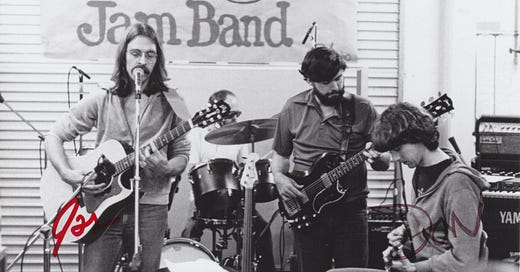

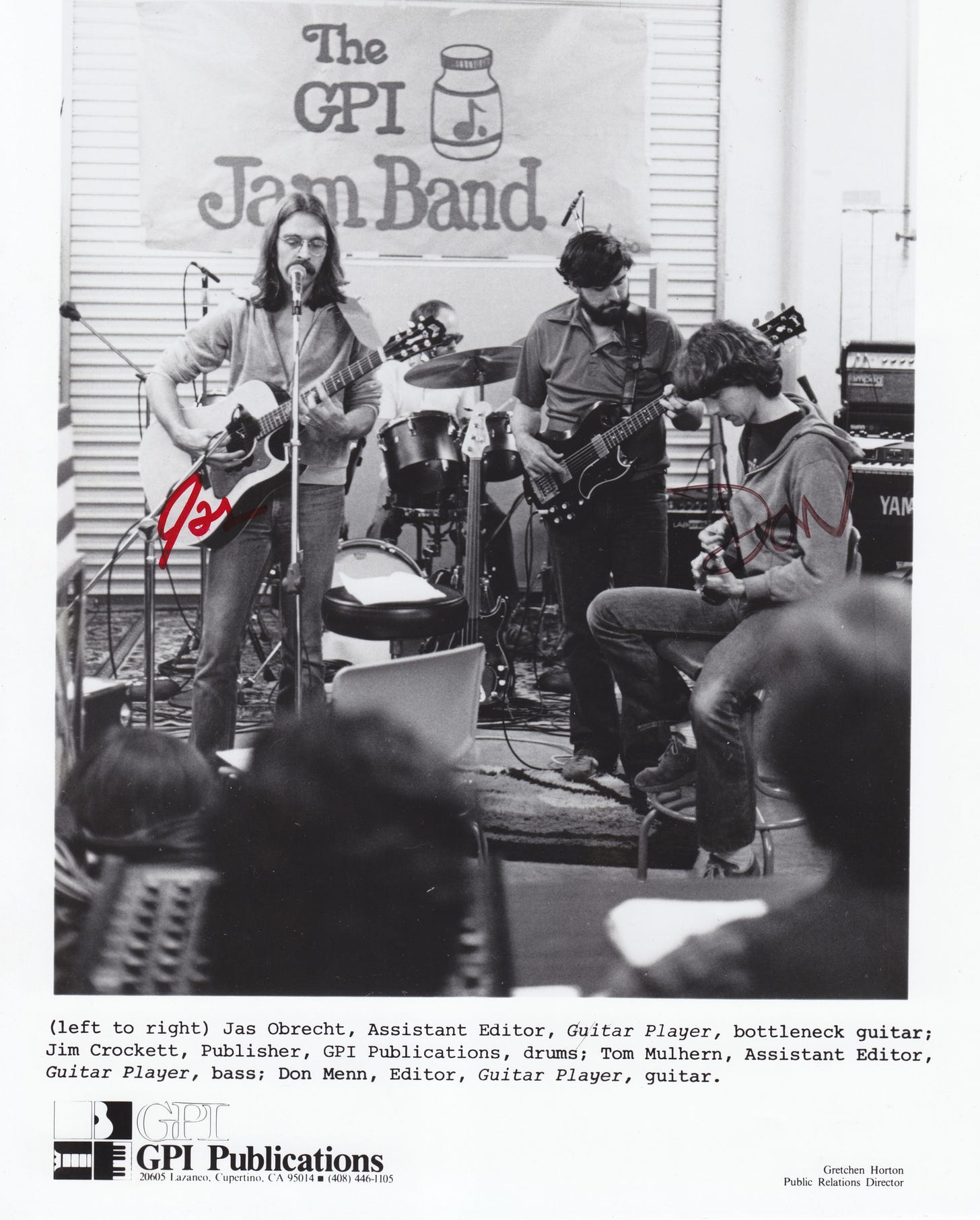
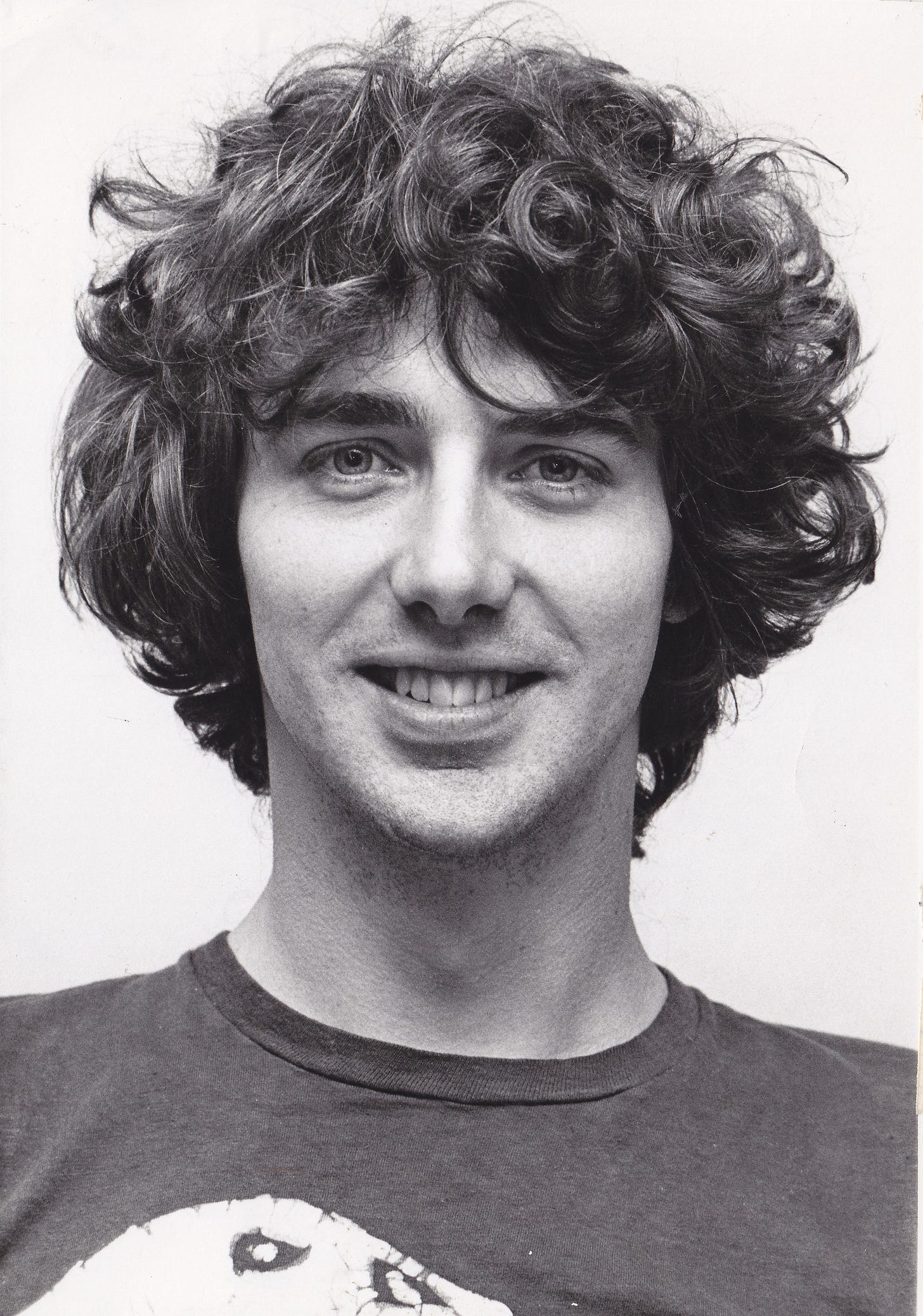
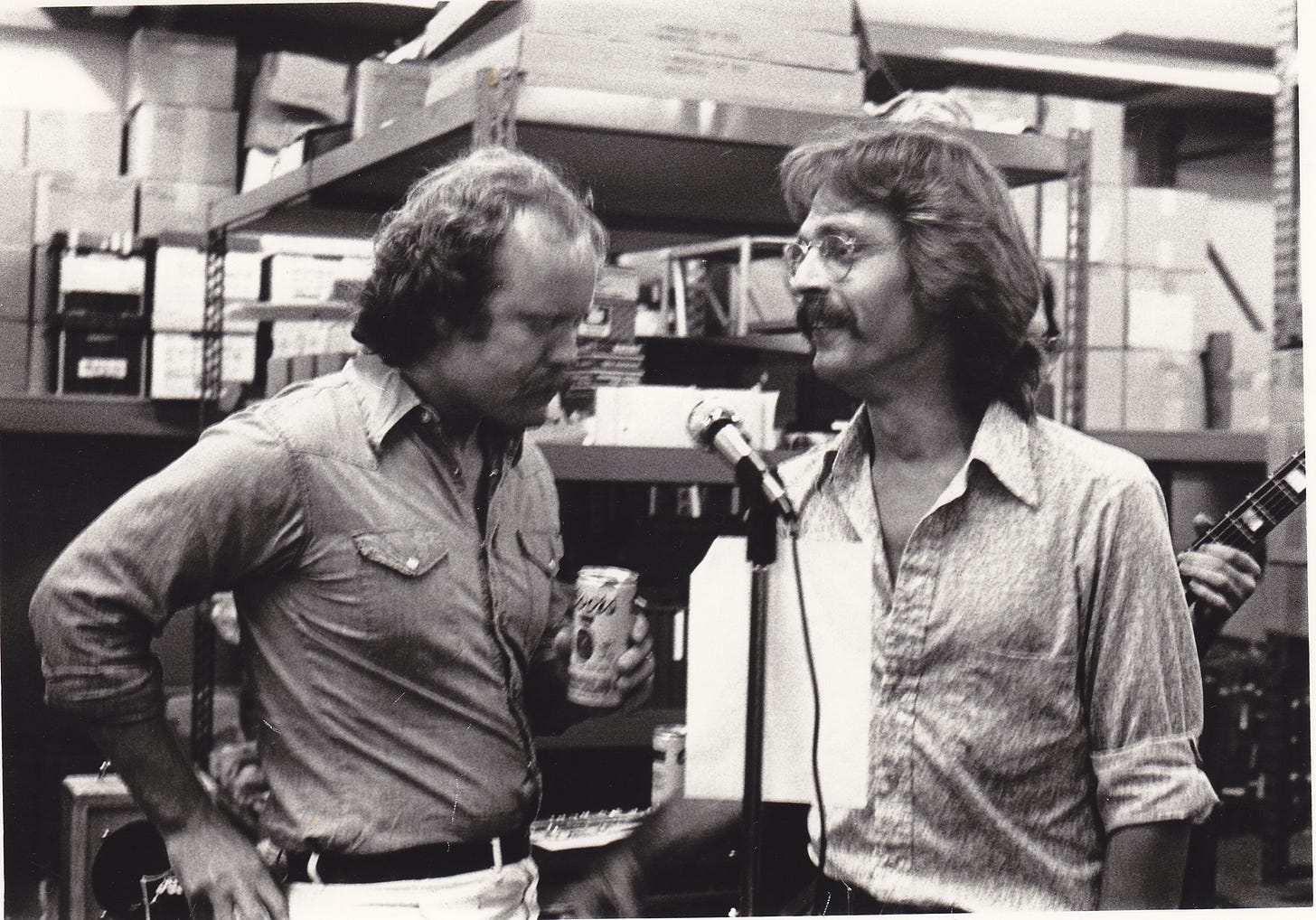
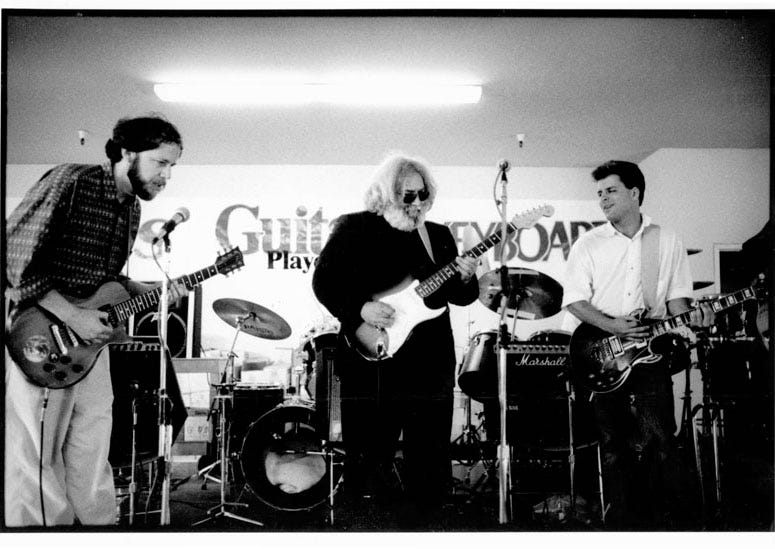
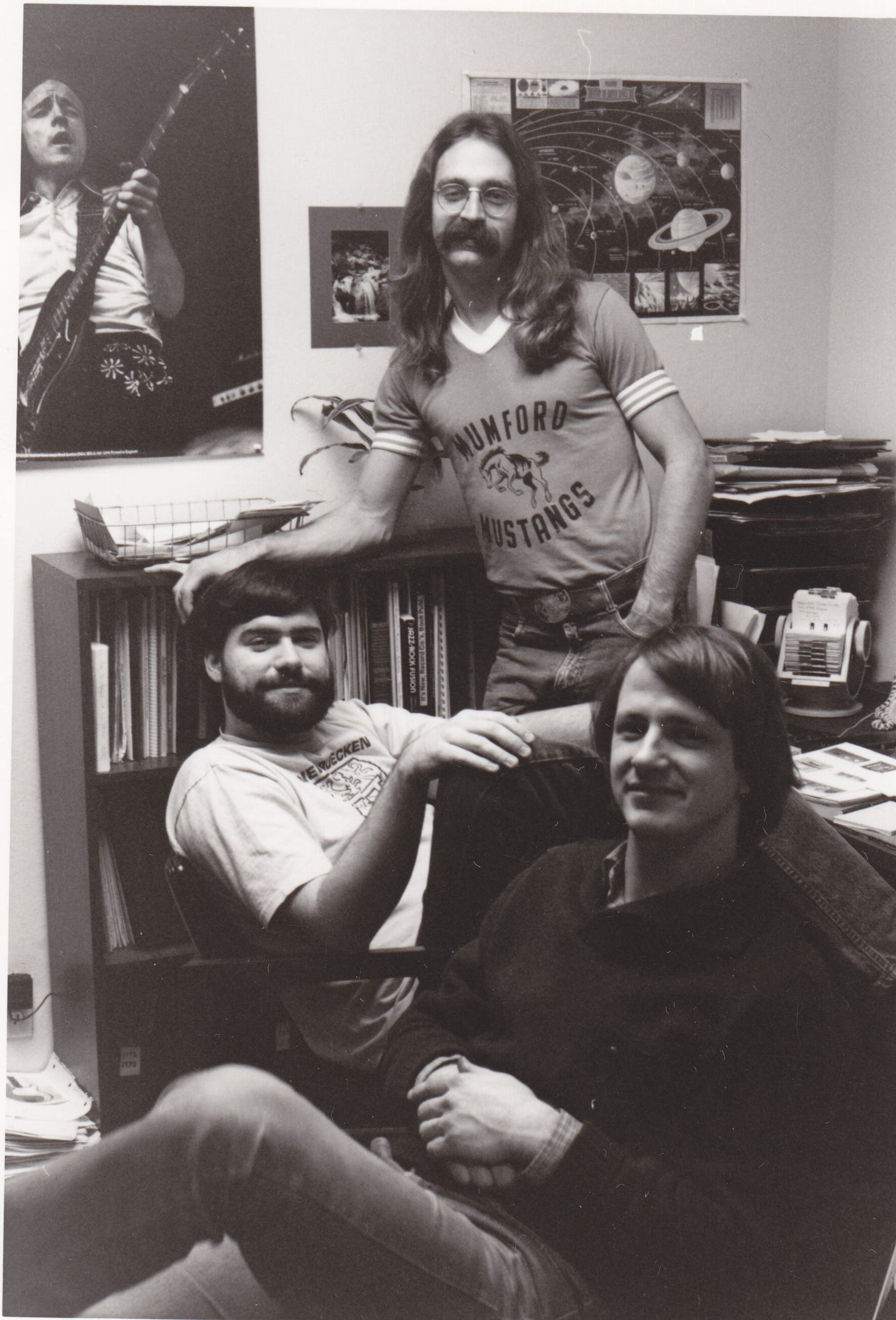
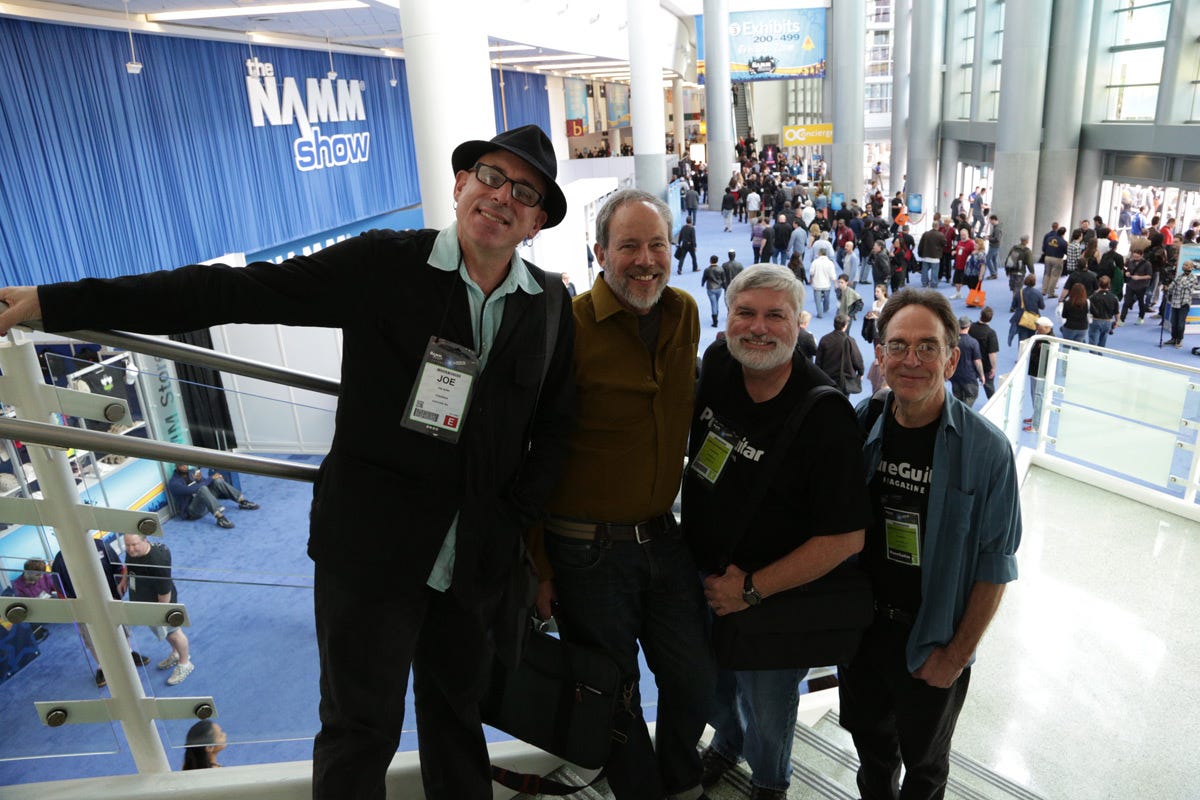
I am so blown away by this piece. To be any part of this remarkable story, and the legacy of your defining years at GP, would be honor enough. But your fond and kind words also leave me smiling broadly.
Much love, ROTO
This is the best article on any subject that I read in the latest three-five years.
Thank you so much!